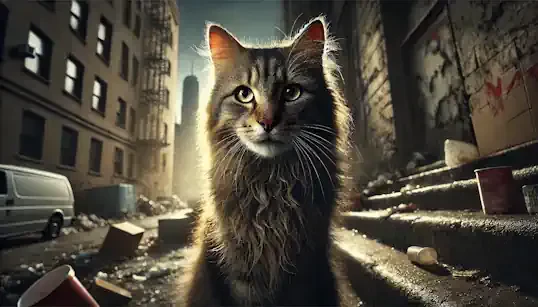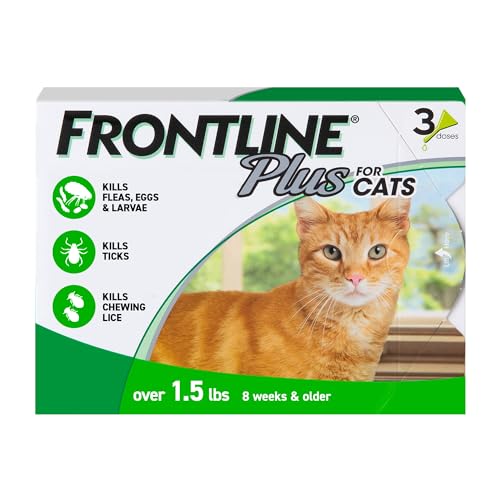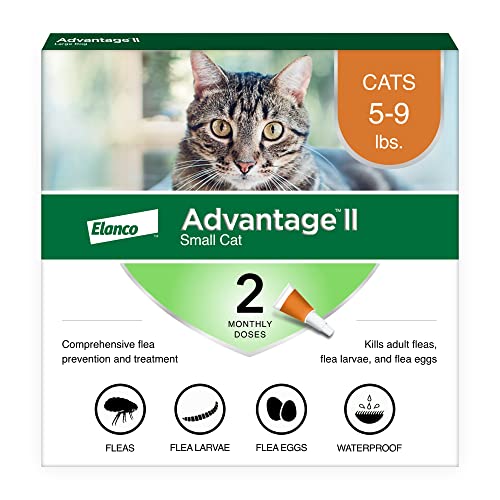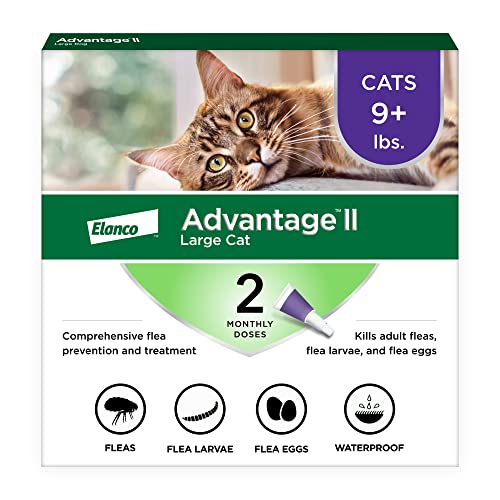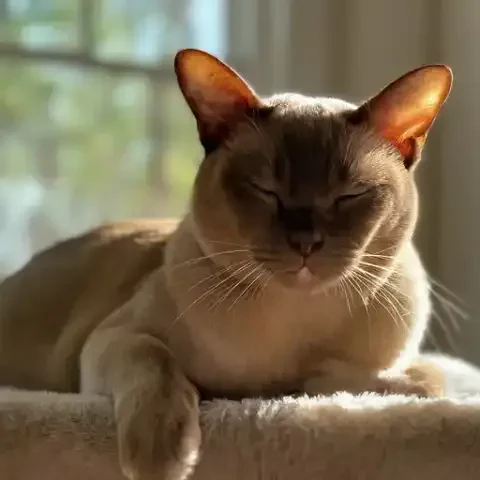Have you ever glimpsed a cat darting under a bush, wary and independent? Perhaps you've noticed a group of cats gathering in a hidden corner of your neighborhood, always keeping their distance. You may have just encountered a feral cat, a creature living a life largely unseen, yet deeply intertwined with our communities. These are not your typical house cats lounging on sunbeams. Feral cats are unsocialized descendants of domestic cats, living outdoors and navigating a world largely separate from human interaction. They are survivors, resilient and adapted to a life on the fringes of our society, and understanding their existence is more important than you might think. Feral cats are a significant part of the feline population in many areas, impacting local ecosystems and requiring thoughtful consideration in how we, as humans, interact with and manage their presence. This article aims to illuminate the often mysterious world of feral cats, to delve into their unique lives, dispel common myths, and provide essential knowledge for anyone seeking to understand and interact responsibly with these independent felines. Prepare to journey into the world of feral cats, a world that is far more complex and fascinating than meets the eye, and discover what you truly need to know.
One of the most crucial steps in understanding feral cats is to be able to distinguish them from other types of cats we encounter in our communities, particularly stray and pet cats. While all three categories fall under the umbrella of domestic cats, their backgrounds, behaviors, and needs are vastly different. A feral cat is truly "wild at heart." These cats are typically born outdoors and raised with minimal to no human contact. This early life experience, or lack thereof, is critical. They become feral early in life, often before the crucial socialization periods that shape a kitten's comfort around humans. The hallmark of a feral cat is their unsocialized nature. "Feral" by definition implies a lack of domestication, and in feline terms, this translates to being primarily unsocialized to humans. They are wary, fearful, and actively avoid human contact. Feral cats are not candidates for adoption into typical homes as pets; their deep-seated fear and lack of socialization make indoor domestic life incredibly stressful for them. Their lifestyle is distinctly outdoor. They live their entire lives outdoors, often forming groups called colonies, which are loose social structures based around food sources and shelter. They establish territories, navigate their environment independently, and rely on their instincts for survival. Perhaps the most defining behavioral cue of a feral cat is their avoidance of human contact. A feral cat will instinctively flee if approached by humans. They are masters of evasion, often darting away at the slightest sound or movement. If cornered, a feral cat may hiss, spit, swipe, or act defensively out of fear, but their primary instinct is always to escape human interaction.
In contrast, a stray cat occupies a different space in the feline spectrum. Stray cats are usually former pet cats who have become lost or have been abandoned by their owners. Unlike feral cats who were born wild, strays were once domesticated and lived in homes. Because of their past as pets, stray cats often retain some level of socialization to humans, though the degree of socialization can vary significantly. Some strays might be initially fearful and withdrawn after being lost or abandoned, while others might be more approachable and even seek human interaction, especially when hungry or in need of assistance. Stray cats, at least initially, are often dependent on human food sources to some degree. Having been accustomed to being fed by humans, they may initially rely on scavenging for scraps or begging for food from people as they try to adapt to living outdoors. However, their past socialization offers a glimmer of hope. Stray cats have the potential to be re-homed and adopted. With time, patience, and gentle care, many stray cats can be re-socialized and successfully transitioned back into indoor pet life, making them candidates for rescue and adoption programs. A key behavioral cue that differentiates stray cats from feral cats is their potential to approach humans, albeit often cautiously. A stray cat might approach humans for food, or exhibit a level of curiosity mixed with apprehension. They generally display less intense fear towards humans compared to a truly feral cat and may show signs of recognition or responsiveness to gentle human interaction.
Finally, we have the pet cat, the familiar feline companion thriving in a domestic setting. Pet cats live primarily indoors, sharing our homes as beloved family members. They are fully socialized to humans, having been raised and accustomed to human interaction from a young age. Pet cats are comfortable with human contact, actively seeking affection, enjoying being petted and played with, and thriving on interaction with their human families. In stark contrast to feral cats, pet cats are completely dependent on human care. They rely entirely on their human companions for food, water, shelter, veterinary care, and all their needs. The key behavioral cue of a pet cat is their clear enjoyment of human interaction and their comfort within a domestic setting. They seek out attention, purr when petted, play with toys provided by humans, and generally exhibit all the behaviors we associate with a domesticated feline companion. Understanding these distinctions – feral, stray, and pet – is not just a matter of semantics; it's vital because it dictates the appropriate way to interact with, care for, and manage each type of cat. Each category has different needs and requires different approaches. Welfare considerations are also distinct for each group. The welfare concerns for a feral cat are different from those for a stray cat or a pet cat, and solutions must be tailored accordingly. Ultimately, recognizing these different populations helps us address community cat issues effectively, allowing for targeted and humane management strategies that consider the unique circumstances of each type of feline.
Now that we can distinguish between feral, stray, and pet cats, let's delve deeper into the lives of feral cats themselves, exploring their unique characteristics and behaviors that define their existence on the fringes of our world. In terms of physical appearance, feral cats often blend seamlessly into the general cat population. They frequently resemble domestic shorthair or longhair mixes. In many cases, from a distance, it can be difficult to visually differentiate a feral cat from a stray or even a pet cat who happens to be outdoors. However, there is one universal visual marker that instantly identifies a feral cat who has been part of a Trap-Neuter-Return (TNR) program: the "tipped" ear. This ear tip is a straight-line cut on the tip of one ear, usually the left, performed under anesthesia during the spay/neuter surgery. It's a widely recognized symbol indicating that the cat has been sterilized and is part of a managed feral cat colony, allowing for quick identification from a distance without needing to trap the cat again. Feral cats exhibit a wide range of coat colors and patterns, mirroring the diversity seen in stray and pet cat populations. You’ll find feral cats in every coat color imaginable, from classic tabby patterns and solid blacks to calico, tortoiseshell, and everything in between. Visually, their coats offer little distinction from other cat populations, further emphasizing that the defining characteristic of a feral cat is their behavior, not their appearance.
It is in their behavioral traits that the true essence of feral cats emerges – they are, above all else, survival experts. Extreme wariness and fear of humans is the primary and most defining behavioral trait of a feral cat. This is not simply shyness; it's a deep-seated, instinctive fear rooted in their lack of early socialization. Feral cats perceive humans as a potential threat and will actively avoid all human contact. Approaching a feral cat will almost invariably result in them fleeing immediately. They are incredibly adept at hiding, disappearing into undergrowth, beneath structures, or any available refuge. If cornered and unable to escape, a feral cat may hiss, spit, growl, arch their back, flatten their ears, and exhibit other defensive behaviors, but aggression is typically a last resort when escape is impossible and driven by fear, not malice. Feral cats often exhibit nocturnal or crepuscular activity patterns. To minimize encounters with humans and predators active during the day, feral cats are often more active during dawn and dusk (crepuscular) or entirely at night (nocturnal). This adaptation allows them to forage, hunt, and navigate their environment under the cover of darkness, further reinforcing their elusive nature. Independence and resourcefulness are hallmarks of feral cat behavior. They are highly self-reliant and adept at finding everything they need to survive outdoors. They are skilled hunters, preying on rodents, birds, insects, and whatever small wildlife is available in their environment. They are also resourceful scavengers, taking advantage of any available food sources, including discarded food scraps. They are adept at finding water sources, from puddles and streams to dew and condensation. They seek out natural shelters like bushes, crevices, or man-made structures like sheds and porches for protection from the elements. Feral cats are territorial creatures, establishing and defending territories, particularly around reliable food sources and safe shelters. Territory size can vary depending on resource availability and population density, but feral cats are generally aware of and protective of their living space. They often live in loose social groups known as colonies. While often described as living in colonies, feral cat colonies are not rigidly structured hierarchical societies like ant colonies. Instead, they are more fluid social groups that form around shared resources, primarily food. Colony dynamics can vary, but often involve loose hierarchies, kinship bonds (especially among related females), and established social relationships. Communication within feral cat colonies tends to be subtle and often silent to human ears. They rely heavily on scent marking to communicate territory boundaries, social status, and reproductive status within the colony. Body language cues like tail position, ear posture, and subtle movements play a significant role in feline communication within their social groups. Vocalizations are generally less frequent and less reliant on loud meows or calls typically directed at humans in domestic cats. Feral cats are typically seasonal breeders, meaning their reproductive cycles are influenced by seasonal changes in daylight and temperature. In temperate climates, kitten season, the period of peak breeding and kitten births, typically occurs in spring and summer months, when weather conditions are favorable and food resources are more abundant. This seasonal breeding pattern, if left unmanaged, can lead to rapid population growth in feral cat colonies.
Life on the fringes is far from easy. Feral cats face constant hardships and dangers in their daily struggle for survival. Environmental dangers are a constant threat. Predation is a significant risk, especially for vulnerable kittens. Coyotes, domestic dogs, foxes, raccoons, and in some areas, even large birds of prey, can prey on feral cats, particularly young or weakened individuals. Harsh weather conditions pose severe challenges. Exposure to extreme heat in summer can lead to heatstroke and dehydration, while frigid winter temperatures, rain, and snow can cause hypothermia and frostbite, especially for cats without adequate shelter. Starvation and malnutrition are perpetual concerns. Feral cats must constantly forage and hunt for food, and consistent food sources are often scarce and unreliable, especially during winter months or in areas with limited resources. Competition for food within colonies and with other animals can further exacerbate food insecurity. Dehydration is another significant risk. Access to clean and reliable water sources can be limited, particularly in dry climates or during freezing temperatures when water sources can become inaccessible. Traffic and accidents are a constant human-related danger. Feral cats living near roads or in urban environments face a high risk of being hit by vehicles. Their nocturnal habits and need to cross roads in search of food and territory increase their exposure to traffic-related accidents.
Beyond environmental dangers, feral cats are also highly vulnerable to a range of health issues and diseases. Parasites are rampant in feral cat populations. Living outdoors with limited hygiene exposes them to a high prevalence of both internal and external parasites. Fleas, ticks, ear mites, and various types of worms are common infestations, weakening their immune systems and causing discomfort. Infectious diseases are a major threat in densely populated feral cat colonies. Close proximity and limited or no vaccination expose them to a variety of contagious diseases common in cat populations, including upper respiratory infections (often called "cat flu"), feline leukemia virus (FeLV), feline immunodeficiency virus (FIV), and panleukopenia. While rabies is less common in cats than in some other wildlife, it remains a potential risk for unvaccinated feral cats. Injuries are an unfortunate reality of feral cat life. Fights with other animals over territory, food, or mates are common and can result in untreated wounds that become infected. Injuries from environmental hazards, such as falls, encounters with sharp objects, or accidents, can also lead to untreated wounds and infections. Dental problems are almost inevitable. A diet consisting of scavenged food and hunted prey, combined with a complete lack of dental care, leads to widespread dental disease in feral cats. Tooth decay, gum disease, and painful dental infections are common, affecting their ability to eat and causing chronic pain. All these cumulative dangers and health challenges contribute to a significantly lower life expectancy for feral cats compared to indoor pet cats. While indoor cats can live well into their teens and even twenties, the average lifespan of a feral cat is considerably shorter, often only a few years, with many succumbing to disease, injury, or starvation at a young age.
Adding to these natural and biological challenges, feral cats also face human-related threats. Vehicle traffic, again, is a major human-created danger, as discussed previously. Intentional harm and cruelty, sadly, is a potential, though hopefully rare, threat. Feral cats, often misunderstood and sometimes viewed as nuisances by some individuals, can be vulnerable to intentional acts of cruelty, mistreatment, or harm, ranging from poisoning and inhumane trapping to direct physical abuse. Lack of veterinary care is perhaps the most pervasive human-related threat. Feral cats, by their very nature, have limited to no access to veterinary care when they become ill or injured. This lack of treatment means that even minor illnesses or injuries can escalate into serious, debilitating, and even fatal conditions, leading to prolonged suffering. Misunderstanding and negative perceptions from the public often compound the challenges faced by feral cats. They are often viewed negatively by some members of the public due to misconceptions about their behavior, disease risk, and impact on wildlife. This negative perception can lead to calls for removal or inhumane solutions, rather than support for humane and effective management strategies like TNR.
Given the complex lives and inherent challenges faced by feral cats, it is crucial to consider responsible approaches to human interaction and management. Trap-Neuter-Return (TNR) stands out as the most humane and demonstrably effective solution for managing feral cat populations. TNR is a comprehensive process that involves humanely trapping feral cats, transporting them to a veterinary clinic or spay/neuter facility, where they are surgically sterilized (spayed for females, neutered for males) and vaccinated against rabies and distemper. While under anesthesia for surgery, a universally recognized symbol of TNR is performed – ear-tipping, the painless removal of the tip of one ear (usually the left). After recovery, the cats are returned to their original colony or territory, where they continue to live their outdoor lives, but now unable to reproduce and protected from rabies. The benefits of TNR are numerous and well-documented. Population control is the primary and most significant benefit of TNR. By sterilizing feral cats, TNR effectively reduces and stabilizes feral cat populations over time by preventing further breeding. Unlike inhumane and ineffective trap-and-remove methods, TNR addresses the root cause of population growth in a humane and sustainable way. TNR also leads to improved cat health within the colony. Vaccination against rabies and distemper helps reduce the spread of potentially fatal diseases within the feral cat population and, to some extent, to pet cat populations in the area. Neutering reduces roaming and fighting behaviors, which are often associated with mating and unneutered cats, leading to healthier colonies with fewer injuries and disease transmission. Furthermore, TNR reduces nuisance behaviors associated with unneutered cats. Neutering significantly reduces or eliminates urine spraying (territorial marking), loud yowling associated with mating, and fighting among males for dominance and mates, leading to improved coexistence between feral cat colonies and human communities and reducing neighborhood complaints. Perhaps most importantly, TNR is a humane and ethical approach to managing feral cat populations. It addresses the issue of feral cat overpopulation in a compassionate and responsible way, respecting the cats’ wild nature and their established territories while simultaneously improving their welfare and mitigating potential negative impacts on the community. For those interested in supporting TNR, it is important to find local TNR programs and resources. Humane societies, animal shelters, and dedicated cat rescue groups often operate or support TNR programs in their communities. These organizations often offer assistance with trapping, transport to spay/neuter clinics, and sometimes even financial aid or low-cost spay/neuter services for feral cats.
For individuals who choose to feed feral cats, responsible feeding practices are essential. If you choose to provide food, feed regularly and consistently. Establish a feeding routine, providing food at the same time and in the same place each day. This consistency helps the cats establish a predictable routine, avoids attracting larger numbers of cats at once, and allows colony caretakers to monitor the cats’ health and overall colony dynamics. Provide cat food, and specifically cat food, not milk or table scraps. Offer nutritionally balanced commercial cat food, either dry kibble or wet canned food. Avoid giving milk, as cats are often lactose intolerant and milk can cause digestive upset. Table scraps should also be avoided, as they can be unhealthy for cats, lack essential nutrients, and attract pests and wildlife to the feeding area. Fresh water is just as critical as food, so always provide fresh, clean water daily, especially during extreme weather conditions. Ensure water is available and doesn't freeze in winter or evaporate too quickly in summer. Feed in a clean and designated area. Use clean, shallow bowls that are easy to wash and disinfect regularly. Designate a specific feeding area that is relatively clean and away from high-traffic areas. Remove leftover food after a reasonable time, typically 20-30 minutes, to prevent attracting pests, rodents, and wildlife to the feeding site and to maintain a sanitary environment. Feeding time can be a valuable opportunity to monitor cat health and colony dynamics. While feeding, observe the cats for any signs of illness or injury, such as sneezing, coughing, eye discharge, limping, or changes in appetite. Monitor the overall condition of the cats and identify any new cats who may have joined the colony, needing to be trapped for TNR. It’s absolutely critical to understand that feeding alone is not a responsible solution to feral cat management. Feeding feral cats without implementing TNR can actually exacerbate the problem by supporting larger, less healthy colonies and contributing to continued population growth. Feeding should ideally be part of a comprehensive TNR and colony management approach, with spay/neuter as the cornerstone of any responsible feral cat management strategy.
Providing shelter, especially in harsh climates, can significantly improve the welfare of feral cats. Simple and inexpensive shelters can be easily constructed using readily available materials. DIY shelter options include plastic storage bins, dog houses, or even cardboard boxes lined with insulating materials like straw (not hay or blankets, which can hold moisture and freeze, becoming counterproductive in cold weather). Place shelters in safe and protected locations. Choose sheltered locations away from high traffic areas, strong winds, and potential flooding, but still accessible to the cats. Under bushes, on porches, or in quiet corners of yards are often good choices. Consider the specific shelter needs for both winter and summer. Winter shelters should be well-insulated to provide warmth and protection from freezing temperatures, wind, and snow. Summer shelters should prioritize ventilation and shade to prevent overheating in hot weather. Knowing when to intervene and when to leave feral cats be is also essential for responsible interaction. Humane intervention is necessary when a feral cat appears visibly sick or injured. If you observe a cat with obvious wounds, limping severely, exhibiting labored breathing, or displaying other signs of significant illness or distress, humane intervention is warranted. This involves humanely trapping the sick or injured cat and taking them to a veterinarian for evaluation, diagnosis, and appropriate treatment. Kittens present a unique consideration. Feral kittens, if caught young enough, ideally before 8-12 weeks of age, have the potential to be socialized and become adoptable. However, successful socialization requires dedicated time, patience, and expertise in feline socialization techniques. Older feral kittens and adult feral cats are rarely successfully socialized and are generally not suitable for indoor pet life. For healthy, established, ear-tipped feral cats who are thriving in their outdoor environment, the best course of action is generally to leave them in place within their colony or territory after they have been TNR’d. Relocation is often more stressful and harmful than beneficial for established feral cats, as it disrupts their territory, social bonds, and established routines. It's important to avoid well-intentioned but often misguided attempts to "rescue" healthy feral cats and bring them indoors or to animal shelters. While driven by compassion, these actions are often incredibly stressful for the feral cat, who is deeply fearful of human contact and confinement. Animal shelters are often ill-equipped to handle truly feral, unsocialized cats, and euthanasia is sadly a common outcome for feral cats brought to shelters due to their unadoptability and the high stress levels they experience in shelter environments. TNR and colony management, allowing feral cats to live out their lives outdoors in their familiar territory while humanely addressing population growth and improving their overall welfare, is generally a far more ethical and effective approach than attempting to "rescue" healthy feral cats.
Finally, let's dispel some common myths surrounding feral cats and separate fact from fiction to promote a more informed understanding. A prevalent myth is that feral cats are a nuisance and should simply be removed or eliminated. The reality is that removal is not only inhumane but also demonstrably ineffective. Removing feral cats from an area creates a "vacuum effect." When a colony is removed, the territory becomes vacant, and new, unneutered cats from surrounding areas quickly move in to fill the resource vacuum, leading to a rebound in the feral cat population in a short period of time. TNR, on the other hand, is a more effective long-term population control strategy, preventing reproduction and stabilizing colony sizes over time. Furthermore, TNR actually improves coexistence between feral cats and human communities. By reducing nuisance behaviors associated with mating and unneutered cats, TNR reduces spraying, yowling, and fighting, often leading to fewer neighborhood complaints and a more harmonious environment. And contrary to the perception of them being solely pests, feral cats can actually play a beneficial role in controlling rodent populations. In urban and rural environments, feral cats can help naturally control populations of rats, mice, and other rodents, offering a form of natural pest control. Another common misconception is that feral cats are a major threat to wildlife. The impact of cats on wildlife is a complex and often debated issue, and context is crucial. While cats, as predators, do impact wildlife populations, particularly birds and small mammals, the extent of that impact varies depending on factors such as location, ecosystem type, and the overall health of the ecosystem. Domestic cats, both pet and feral, in general, contribute to predation pressure on wildlife. However, well-managed TNR’d colonies, with consistent access to food provided by caretakers, often exhibit reduced hunting behavior compared to starving, unmanaged feral cat populations, as they are less driven by hunger to hunt extensively. It’s important to remember that native habitat loss and other human-caused factors are generally far greater threats to wildlife populations than feral cats alone. Habitat destruction, pollution, and climate change have far more significant negative impacts on biodiversity than predation by cats. Responsible pet ownership is key to minimizing the impact of all domestic cats, both pet and feral, on wildlife. Encouraging indoor lifestyles for pet cats, using bell collars on outdoor cats when supervised, and supporting TNR for feral cats are all part of a comprehensive approach to responsible cat management that considers both feline welfare and environmental impact. The myth that feral cats are diseased and dangerous to humans is another widespread misconception. The reality is that TNR programs include rabies vaccination as a standard practice. Vaccinating feral cats against rabies significantly reduces the risk of rabies transmission within managed colonies and to the wider community. Disease transmission from feral cats to humans is actually relatively rare with basic hygiene and common sense. Due to their natural fear and avoidance of human contact, direct interaction with feral cats is generally minimal. Ironically, pet cats, due to their much closer proximity to humans and the potential for scratches or bites during handling, may statistically pose a higher risk of certain zoonotic disease transmission to humans compared to feral cats who actively avoid human interaction. Finally, the myth that feral cats should be brought to animal shelters is based on a misunderstanding of shelter capabilities and feral cat welfare. Most animal shelters are not designed or equipped to handle truly feral, unsocialized cats. Shelter environments are often incredibly stressful for feral cats, who are terrified of confinement and human interaction. Unfortunately, due to their unadoptability as typical pets and the stress of shelter life, euthanasia is often the unfortunate outcome for feral cats brought to shelters. Outdoor colonies are truly the home for feral cats. They are adapted to outdoor living and their established colonies and territories are their familiar and secure environments. Removing them from their colonies is disruptive, stressful, and often detrimental to their well-being. TNR is a far more humane and ethical solution for feral cats than bringing them to shelters. TNR allows feral cats to continue living their lives outdoors in their familiar territories while addressing population growth, improving their health, and promoting harmonious coexistence with the community, a win-win for both cats and humans.
So, how can you help feral cats responsibly and make a positive difference in your community? Supporting local TNR programs is one of the most impactful ways to contribute. Volunteer your time with local TNR organizations. Many TNR groups rely heavily on volunteers to help with trapping, transporting cats to clinics, assisting at spay/neuter events, and providing ongoing care for managed colonies. Donate funds or supplies to support TNR efforts. Financial donations help TNR organizations cover veterinary costs, purchase traps and supplies, and expand their programs. Donating needed supplies like cat food, traps, carriers, and materials for building cat shelters is also incredibly helpful. Become an advocate for TNR in your community. Educate your neighbors, community leaders, and local government officials about the benefits of TNR, dispelling myths and promoting understanding. Advocate for TNR-friendly policies and increased funding for TNR programs in your area. If you are able and committed to long-term care, consider becoming a colony caretaker. Educate yourself on responsible colony care practices. Learn about best practices for feeding, providing shelter, monitoring colony health, and maintaining a TNR’d colony effectively. Commit to providing regular food, fresh water, and appropriate shelters for a designated feral cat colony, ensuring their basic needs are met consistently. Monitor the colony's health and dynamics regularly. Observe the cats for any signs of illness or injury, track new arrivals, and assess the overall health and stability of the colony. Take action as needed, such as arranging veterinary care for sick or injured cats or trapping newcomers for TNR. Maintain the feeding area cleanliness. Keep the feeding area clean and tidy, removing leftover food promptly and sanitizing bowls regularly to prevent attracting pests and maintain neighborhood harmony. Educating others and spreading awareness is also crucial. Talk to your neighbors and other community members about feral cats, sharing accurate information about TNR and responsible management strategies. Use social media platforms to spread awareness about feral cats, highlight the importance of TNR programs, and share information on how people can get involved and help. Challenge misconceptions about feral cats politely but firmly whenever you encounter them, correcting misinformation and promoting accurate and compassionate perspectives. Support organizations working directly with feral cats. Donate to reputable local and national feral cat rescue organizations dedicated to TNR and feral cat welfare. If you have experience with cats and the resources to dedicate to intensive care, consider fostering socializable kittens or friendly stray cats from rescue organizations. Fostering can be a critical step in helping young kittens or social stray cats become adoptable into loving homes.
In conclusion, understanding feral cats is about recognizing their unique place in our world, acknowledging the challenges they face, and embracing a compassionate approach to coexistence. Feral cats are not simply stray pets gone wild; they are unsocialized animals adapted to a life outside of human homes, living challenging lives on the fringes of our communities. Trap-Neuter-Return is not just a program; it is the most humane and effective solution we have for managing feral cat populations, benefiting both the cats themselves and the communities they inhabit. Responsible action, whether it's supporting TNR programs, becoming a colony caretaker, or simply educating others, is key to making a positive difference in the lives of feral cats. Let us approach feral cats with compassion and respect, recognizing their wild nature, acknowledging the hardships they endure, and promoting humane coexistence in our shared environment. By understanding feral cats and taking informed, compassionate action, we can improve their lives, create more harmonious communities, and foster a more balanced and humane approach to living alongside all animals, including those who live on the edges of our domestic world, wild at heart, yet undeniably deserving of our understanding and respect.
